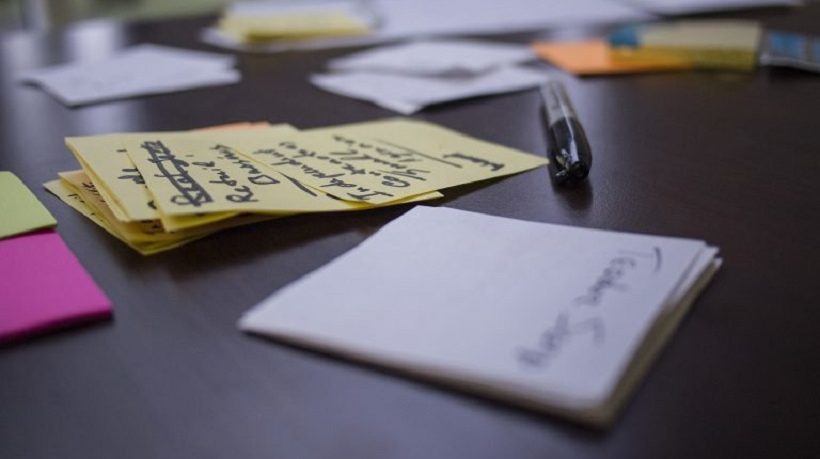It's Time To Put The Design Into Instructional Design: Design Thinking For Instructional Design Series Part 1
According to Harvard Business Review, US organizations spend over $160 billion dollars on employee training and education, with global figures estimated as high as $356 billion. That’s billion; with a B. That is a lot of money being spent on training. So, how great of a return are we, the Learning and Development (L&D) function, providing to our business partners for that investment?
Well, nearly 75% of the senior managers and leaders in the organizations polled by CEB were dissatisfied with the performance of their L&D department. Now, for a more personal take on the subject, do a search on Twitter for #ihatetraining. Go ahead; I’ll wait.
In addition to the folks who hate exercising, you’ll find employees who aren’t happy with the product we’re creating. They hate being in the classes we created. They hate taking the eLearning we built. And, there is the third group. Those employees who we tap on the shoulder to train new hires. They feel burdened and unmotivated to provide quality experiences to their trainees.
Comparing the amount of money spent on training with the overall dissatisfaction expressed by the target audience(s), it’s easy to understand why there has been pressure to improve the quality and effectiveness of our product. The sad truth is...we haven’t improved much. I’ve been in this industry for over 15 years and for all 15 years, I have heard the same cry for improvement. Struggling to prove our value, our benefit, our ROI.
So, why the concern now? If we’ve been struggling so long as an industry, what’s pressuring us to get better now? I’ll tell you -- it’s two little letters: AI.
Recent developments in Artificial Intelligence has caused me (and others) to become very concerned about the future of Instructional Design as a profession. Today, Artificial Intelligence engines are successfully taking content, running algorithms, and creating written products, like earnings reports or press releases, without any human input. How much longer before someone applies the “rules” of Instructional Design and creates a formula for taking content and creating eLearning?
When I worked as a consultant, I audited thousands of eLearning courses in dozens of organizations. For the most part, the courses followed a similar pattern. And, where there is a pattern, there is the ability to create a formula. Shoot, I can probably write the logic statement and I haven’t coded in years! Start with an opening screen, add a list of objectives, insert content screen 1, add content screen 2, content screen 3 - add interaction type X. Repeat, varying interaction type from X - Z, until all objectives have correlating content and interaction types. A final assessment formula takes tagged content and ensures assessment questions are generated.
Does that feel familiar? Take a look at some of your eLearning courses and see if they fit this formula - even loosely. You’ll likely find a pattern, if not mine, for the courses your organization has created. And remember, where there is a pattern, there is the ability to codify. Imagine the money that could be saved by running a formula that takes content and in a matter of minutes (seconds even) outputs a grammatically correct, fully functional eLearning course that is ready to load onto the Learning Management System.
So, how do we avoid a potential future where machines are creating learning events and objects that rival our own. What can we do today to change the road we are on? The good news is, I believe it’s a relatively simple solution - we act like humans. We use the skills that are uniquely human - our ability to empathize with others, to innovate, to be creative, to have original thought - in order to create learning programs that are designed based on the feelings and needs of the learners. In essence, we put the principles of good design into instructional design.
The word design has been right there in our title of “Instructional Designer” all along, but how much do you relate to the typical designer? If you ask someone to describe the characteristics of a designer, you’ll likely hear responses like "creative", "innovative", "risk-taker", "artistic", maybe even "scatterbrained". Yet, when I look at job descriptions for Instructional Designers, I see words like process-drive, detail-oriented, knowledgeable of theories, etc. I say it’s time we start to emulate other designers - the product designers, user experience designers, and other designers - who push envelopes, who break rules, who create.
The good news is that those designers are very open to sharing what they’ve learned and how they work toward a great design. There are tools and techniques to help build empathy for users and to build solutions that solve their problems. And, we can easily adjust these techniques and tools to help us create instructional products that solve problems for our learners.
This is what I refer to as Design Thinking for Instructional Design and this article is Part I of a four-part series on how and why I believe we should use design thinking to help improve instructional design.
What Is Design Thinking?
Design thinking is a philosophy as much as a process. Originally credited from Stanford University, design thinking is about creating solutions that meet the needs of the user audience. Design thinking uses techniques and tools to truly get to the heart of a user’s problem, and build a solution to meet their needs. Therefore, it’s logical that the first step in the design thinking process is empathize. During the empathize phase, designers take steps (often literally in the shoes of their users) to understand the problem from the their perspective.
Once the designer (or design team) has a solid grasp of the problem, they come together in the second phase of the proces - ideate, in which they brainstorm potential solutions. Again, for this phase, there are tools and techniques to help facilitate the process. Typically, an ideation session focuses on generating a large number of ideas and then narrows the ideas down to a select few choices which move to the next phase - prototype.
Prototypes are done quickly, and often with nothing more than very rudimentary tools - like paper, pens, and tape. The prototypes are introduced to the user. When a prototype has merit to solve the problem, the user and designer iterate on the design ultimately creating a product that not only solves the problem, but meets the needs of the user.
The similarity between the goals and outcomes of design thinking and Instructional Design are apparent - after all, aren’t we here to help solve the problem of our business while meeting the needs of our learners?
The minute I read my first article on design thinking, a lightbulb went off. There is no difference between what they hope to accomplish and what we do, so why should our process and tools differ? Design thinking has produced some of the most compelling and useful products and solutions, including the first computer mouse, an incubation blanket for third world babies, an MRI machine designed for children, etc. etc. etc. The list continues to grow. How can we learn from their success? How can we utilize their process, tools and techniques to create a better experience or product for our learners?
The next 3 parts of this article series will begin to expose you to an entirely different approach to your Instructional Design. One that not only builds a better product, but does so by utilizing those uniquely human characteristics that can’t yet be replaced by Artificial Intelligence - empathy, creativity, innovation, and original thought. I hope you enjoy the series.
Sources:
- Beer, M., Finnström, M. & Schrader, D. (2016, October). Why Leadership Training Fails—and What to Do About It. Harvard Business Review.
- CEB (2015) L&D Functional Effectiveness Survey, internal CEB report.
- Brown, T. (2009) Change by Design New York, NY: Harper Business.







